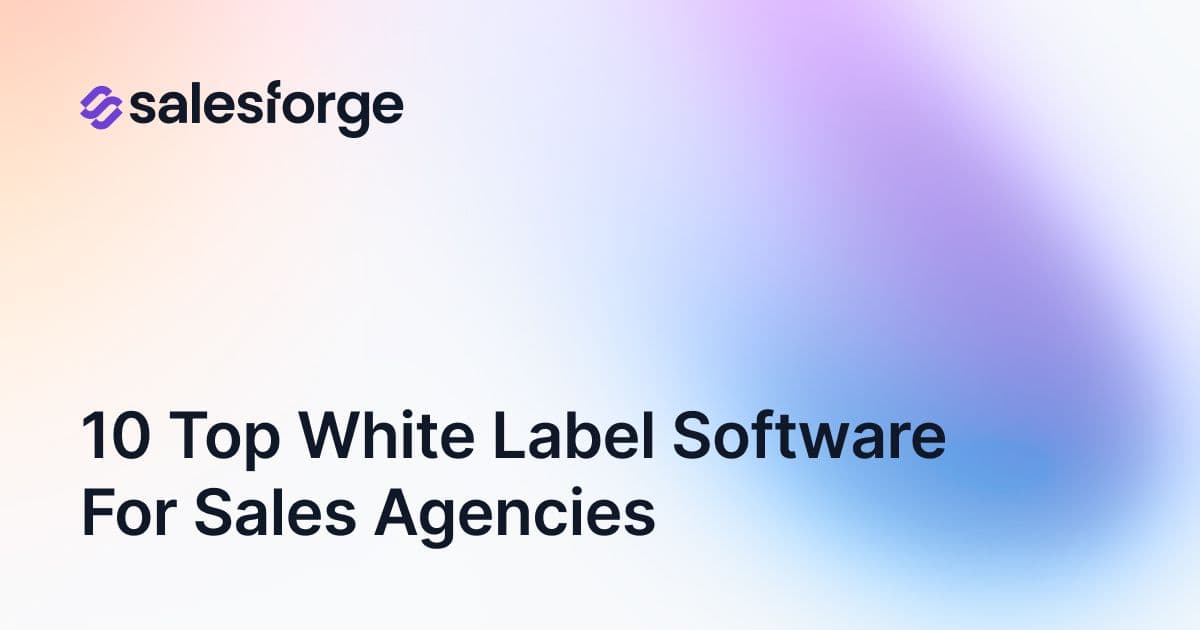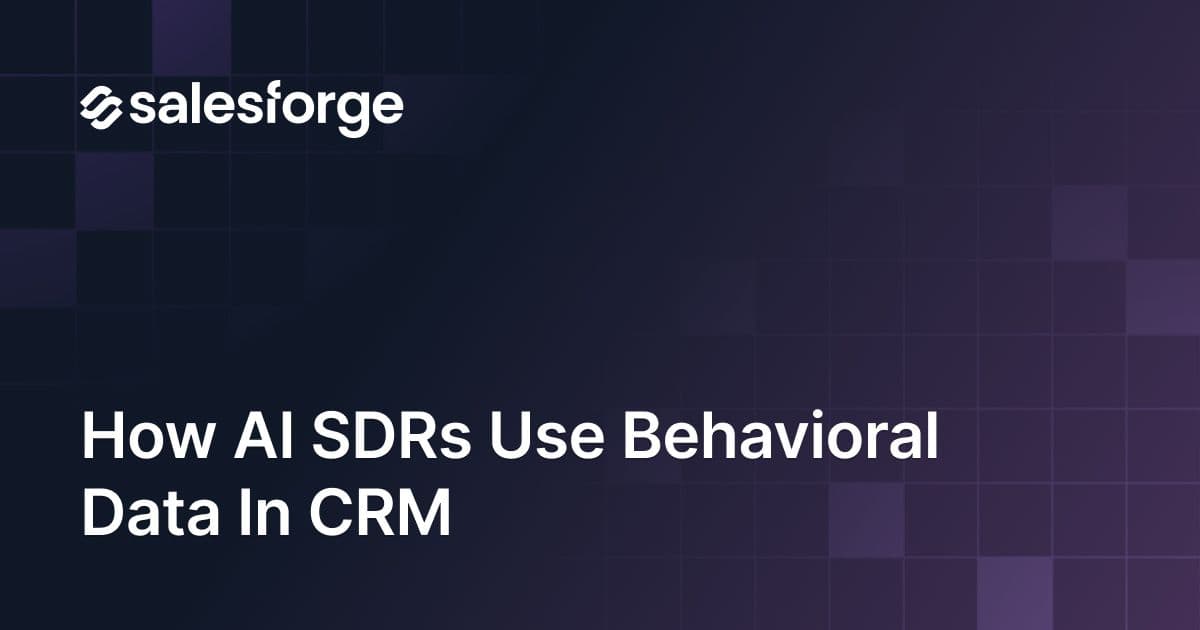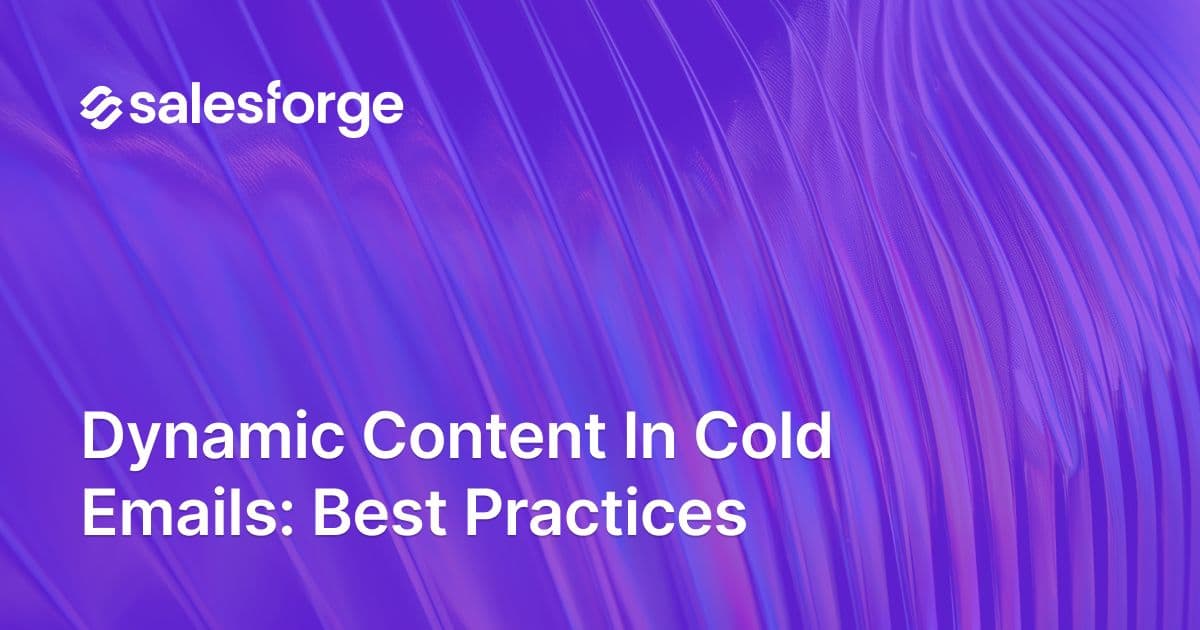What is Vibe Selling? Ultimate Guide For Sales Reps
Most reps lose the deal long before they even pitch the product.
Not because the offer’s bad.
Not because the price is wrong.
But because their vibe was off.
Welcome to Vibe Selling, the skill of making people feel like buying… before they even know what you’re selling.
In 2025, sales aren't about having the best product sheet.
It’s about how you show up: your tone, your energy, your timing, your delivery.
Because buyers can smell “salesy” from a mile away, and they’re running from it.
That’s why this blog exists.
After working with hundreds of outbound reps, agency owners, and cold email marketers, I’ve seen one pattern:
Those who get the vibe right win more. Period.
In this ultimate guide, you’ll learn:
- What Vibe Selling actually means
- Why it works in modern B2B sales
- How to use it in cold calls, emails, and demos
- Real examples that pass (or fail) the vibe test
- How tools can help you scale the right tone, without killing your deliverability
👉 If you’ve been searching “What is Vibe Selling” on Google, this is the guide that actually breaks it down, step-by-step, no fluff, no guru talk.
Let’s get into it.
What is Vibe Selling?
Vibe Selling is the skill of making your buyer feel good about you before they ever evaluate your offer.
It’s not about slick words or feature dumps.
It’s about emotional alignment, matching tone, pace, and energy so they trust you before you even pitch.
Vibe Selling isn’t manipulation.
It’s not NLP hacks or Jedi tricks.
It’s understanding how people decide, not just what they decide on.
People don’t buy when it makes sense.
They buy when it feels right.
If you’re wondering what Vibe Selling really is, it’s simple:
✅ Less talking. More listening.
✅ Less pitching. More presence.
✅ Less pressure. More pull.
When done right, it makes your outreach sound human, your demos feel natural, and your ask lands smoothly.
No resistance. No friction. Just trust.
That’s the real close button.
That’s vibe selling.
Why Vibe Selling Works (Backed by Psychology)
Buyers don’t make decisions based on logic.
They rationalize decisions based on logic, after they’ve already made up their mind emotionally.
And that’s where Vibe Selling comes in.
Let’s break the psychology:
- Mirror neurons: People subconsciously mirror your tone, posture, and energy. You sound anxious. They feel anxious.
You sound calm and certain. They lean in.
- Trust signals: The brain scans for “Do I like this person?” before it even hears “What’s the offer?”
If the vibe is off, the pitch never lands. - Decision-making bias: According to Harvard research, 95% of B2B buying decisions start emotionally, even for “rational” buyers.
That means you're not competing on features… You’re competing on feeling.
Logic explains.
Emotion converts.
Still think confidence closes the deal?
Wrong.
Authority ≠ aggression.
The reps who win combine warmth + certainty.
Not bulldozing. Not begging.
Just presence. Calm. Commanding energy.
That’s why Vibe Selling works.
Not because it’s trendy.
Because it’s how the brain is wired to say “yes.”
How To Master Vibe Selling (Step-By-Step)
If you're asking how to sell without pitching, this is it.
You don’t need more scripts.
You need alignment.
Vibe Selling isn’t magic. It’s mechanics.
And here’s how to do it step-by-step:
Step 1: Match the tone before pitching the value
Don’t rush into your offer.
First, match their energy, slow pace, fast pace, casual tone, and formal tone.
If you feel “off” early, the sale dies quietly later.
Match first. Sell later.
Step 2: Lead with energy, not information
Most reps open with a fact.
Top closers open with vibe.
Start with presence.
Bring certainty.
If your energy feels low, your product sounds low-value, no matter the price tag.
Step 3: Ditch the salesy tone—sound like a guide, not a closer
You’re not here to pressure. You’re here to lead.
Buyers don’t want to be “closed.”
They want to feel understood.
Talk like a guide.
Ask questions.
Show direction without dominance.
Step 4: Build tension subtly, don’t hard close
Let them feel the gap between where they are and where they could be.
Then let them close it.
The best closes don’t feel like closes.
They feel like alignment.
Step 5: Use modern tools to personalize without being robotic
Everyone says “personalize.”
But if your email sounds like ChatGPT and {{first_name}}, you’ve lost.
This is where tools like Salesforge make a difference.
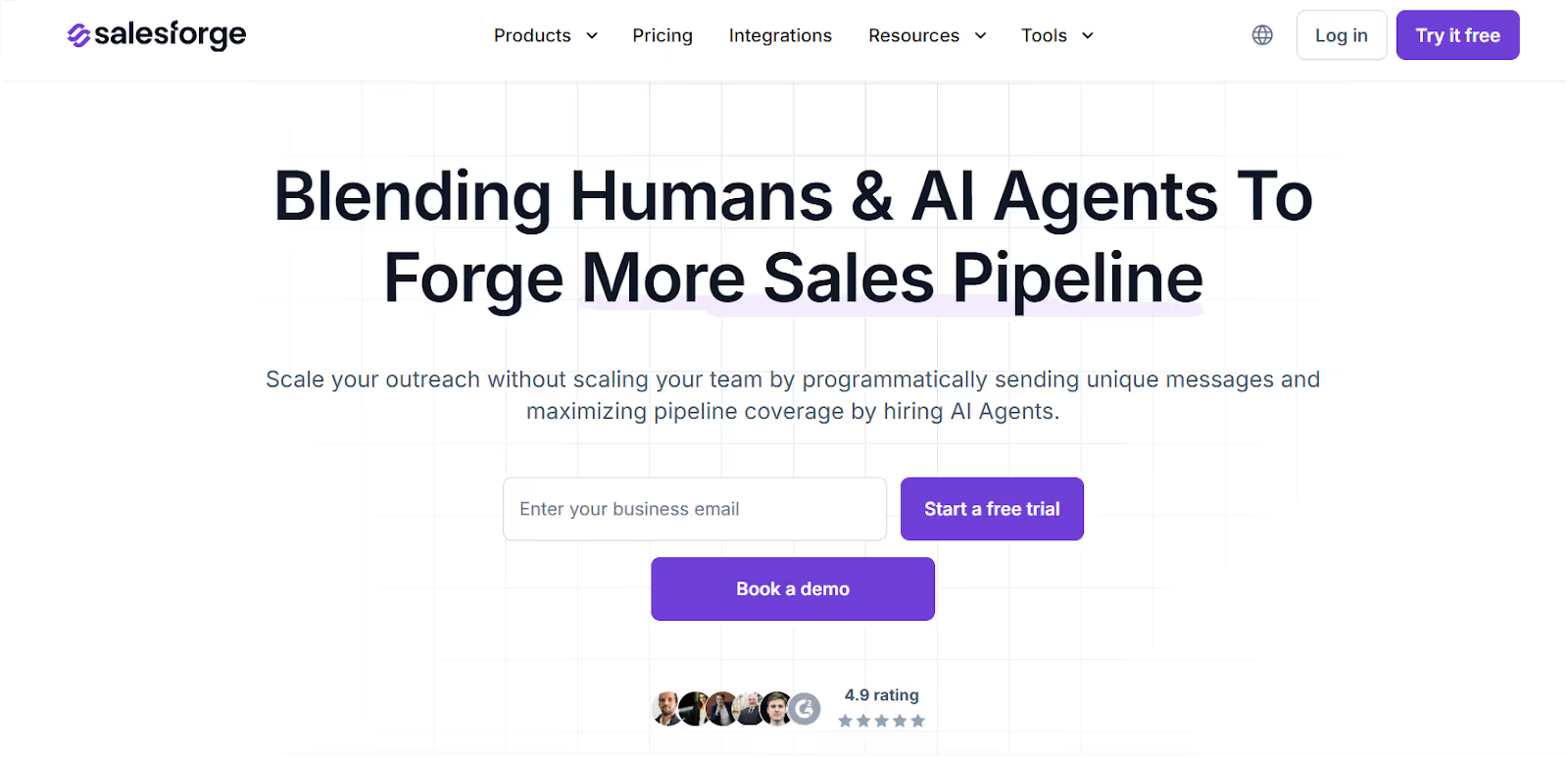
With Salesforge, you can:
- Test different tones and angles across audiences
- Personalize every message using AI, but still sound human
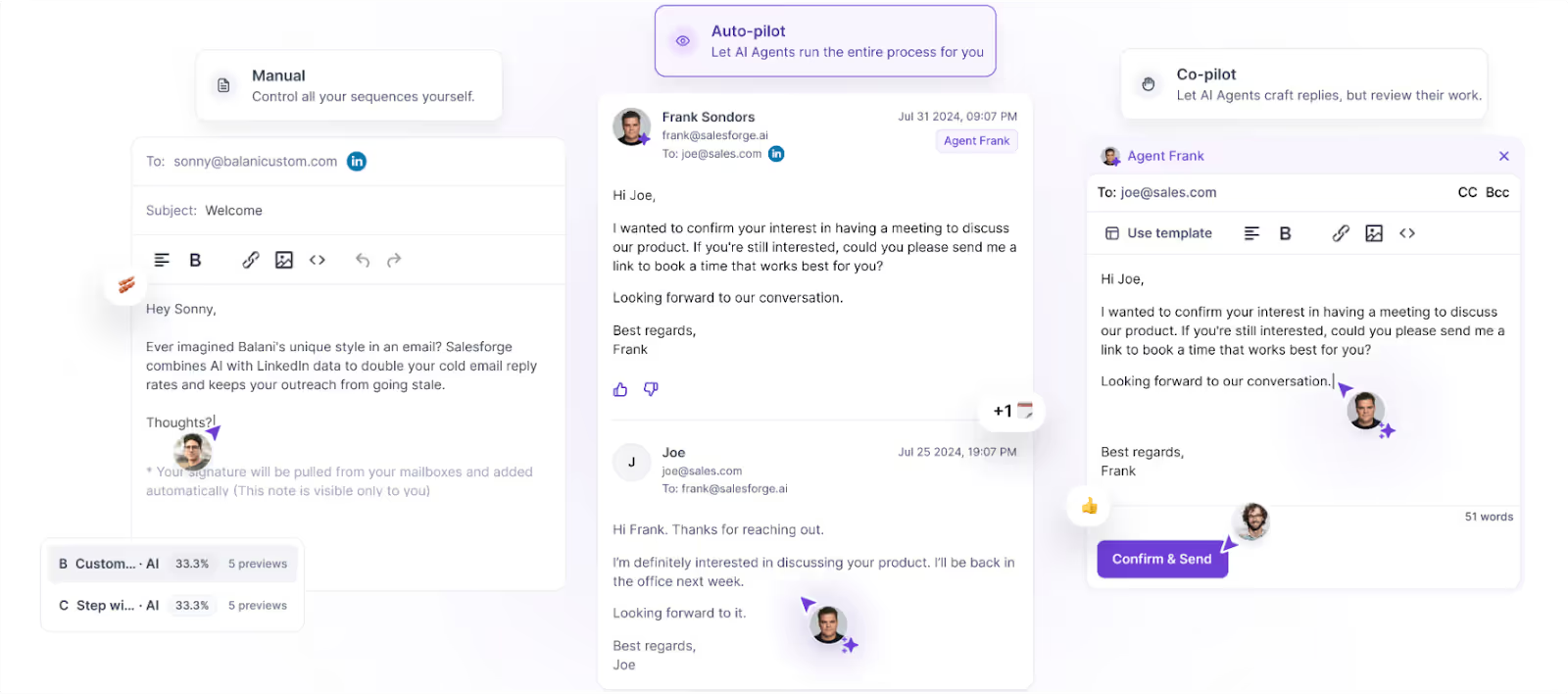
- Scale outreach without burning your domain or getting spam-trapped
You can’t sell on vibe if your emails aren’t getting delivered.
And that’s where infrastructure comes in.
Salesforge doesn’t just help you send cold emails, it gives you the whole control panel:
- Automated DNS, SPF, DMARC setup
- Shared or private IPs, depending on your risk tolerance
- Deliverability boost via Warmforge, baked right into your outreach stack
Testing a new subject line? Trying playful vs. formal tones? Running 10 sequences at once?
Salesforge lets you do all that without ruining your sender reputation.
Because if your email lands in spam, your vibe doesn’t matter.
And if you’re testing multiple tones or campaigns, the shared IP setup lets you scale up safely, without risking domain health.
Vibe selling starts with deliverability. Without that, you’re selling to the spam folder.
Vibe Selling in Cold Outreach: What Changes?
Selling on vibe in a cold email isn’t the same as doing it on a call.
You don’t get the voice tone.
You don’t get body language.
You don’t even get real-time feedback.
Which means: you either land it in the first 3 seconds… or you lose.
Email vs. Call: Different Channels, Same Vibe Rules
- On a call, vibe = tone, pacing, and how you handle silence.
- In cold email, vibe = subject line, first sentence, formatting, and the emotional temperature of your copy.
And here’s the kicker:
Most reps write emails like they’re filling out a form.
Why 80% of Cold Emails Fail the Vibe Check
Most cold emails suck.
Not because of the offer, but because of how it feels.
They feel:
- Robotic (“Hi there, I hope this email finds you well…”)
- Over-scripted (“We help companies like yours… blah blah blah”)
- Desperate (“Just checking in one last time…”)
It’s not just about what you say.
It’s about how it lands.
❌ Common Mistakes That Kill the Vibe
- Fake personalization: “Hey {{first_name}}” ≠ real effort
- Paragraph blocks: Nobody wants a wall of text
- Zero tone: If your email sounds like a bot, it’s game over
- Forgetting inbox psychology: You have 2 seconds to feel relatable
✅ What Great Vibe Selling Looks Like in Cold Outreach
Bad Example:
Subject: Quick question
Hey {{first_name}},
I noticed you’re in [industry]. We help businesses like yours streamline operations using our proven system. Let me know if you’re free for a quick call.
Best,
RepBot3000
Why it fails: No real tone. Zero energy. Feels like a mass-send. Nobody replies to this.
Good Example:
Subject: Cold email that doesn’t suck
Hey Jon—
Not sure if this’ll land or get lost in your inbox, but here goes:
You’re likely already using [X tool].
I work with folks in [space] who are frustrated by [Y bottleneck].
If that sounds like something you’ve screamed at your screen about... I’ve got something you might like.
Want me to send over the 30-sec breakdown?
Why it works:
- Conversational tone
- Pattern break
- Human energy
- No hard pitch
- Invitation, not intrusion
Vibe selling in cold outreach = writing like you speak + sending like you care.
And if you’re sending at scale?
Because if it never hits the inbox, your vibe doesn’t matter.
Vibe Selling Examples (Real or Simulated)
You’ve heard the theory. Now let’s show the receipts.
Here are real-world vibe selling examples that separate reps who get ignored from reps who get replies.
Let’s break down cold emails, cold calls, and follow-ups, what lands, what flops, and why.
Cold Email Example #1 – The “Bad Vibe”
Subject: Quick question
Hi {{first_name}},
I hope you’re doing well. I wanted to reach out and see if you’d be interested in a quick call to discuss how [ToolName] can help your company increase ROI by up to 30%.
Let me know what works best.
Thanks,
John
Why does it fail?
- Feels like a copy-paste template
- Generic greeting, generic value prop
- Zero emotional hook
- No personality, just pitch
👎 This is what inboxes are trained to ignore.
Cold Email Example #2 – The “Good Vibe”
Subject: Saw your post—made me think
Hey Alex—
I saw your post on team scaling pains…
Made me think: a lot of teams rush outreach before their infra is ready.
Not sure if that’s even relevant to you, but I help founders fix it before deliverability tanks.
Happy to share a quick teardown if you want. If not, all good.
Cheers,
Sam
Why it works:
- Personal trigger
- Casual tone, no pitch pressure
- Offers value, not a meeting
- Respects attention span
✅ This feels like a DM, not a sales email. It’s human. That’s the vibe.
Cold Call Opener: Bad vs Good Vibe
Bad Opener:
“Hi, is this Alex? I’m John from XYZ. I just need a few minutes of your time to talk about…”
Why does it fail?
- Sounds scripted
- Immediate ask
- No vibe match
Good Opener:
“Hey Alex—quick one.
I’ll keep it under 30 seconds—can I steal a moment?”
Why it works:
- Acknowledges the interruption
- Short, confident, clear
- Tone = chill but professional
- You earn the next sentence
Follow-Up Email Breakdown
Follow-Up Example:
Subject: Forgot to hit send…
Hey Alex—
Realized I never sent that teardown I mentioned.
(Or maybe you ghosted me, which is fair.)
Either way, happy to share it if helpful.
– Sam
Why does it land?
- Playful self-awareness
- No guilt trip
- Creates a pattern break
- Keeps tone consistent with the original message
This isn’t “checking in.”
This is continuing the vibe from email #1.
You can borrow the structure, but the tone has to be yours.
The best sales scripts aren’t rigid. They flex with the moment.
When Vibe Selling Doesn’t Work (And Why)
Let’s get this straight, Vibe Selling isn’t a hack.
It doesn’t replace sales skills. It amplifies them.
If your offer sucks, your tone won’t save you.
If your CTA is weak, no amount of charm will convert.
Common Vibe Selling Traps That Kill Deals
1. Over-Friendliness
You're not trying to be their best friend.
You're trying to build trust, not start a podcast.
Too much “hey hey!” and not enough clarity? You lose authority.
2. Vague Offers
If your value prop is a mystery, the buyer’s default answer is no.
Vibe creates interest, but clarity closes.
3. Weak CTAs
Saying “let me know” or “just checking in” kills momentum.
Vibe selling doesn’t mean passive selling.
✅ Be warm.
✅ Be human.
❌ But don’t be vague.
Here’s when you stop being soft and step up:
- When the buyer’s dragging their feet
- When multiple decision-makers are involved
- When you’re getting ghosted after multiple touches
- When urgency matters more than rapport
This is when vibe becomes structure, and tone becomes command.
Conclusion: Don’t Just Sell—Shift the Vibe
Vibe means nothing if your email lands in spam.
That’s why serious teams use Salesforge.
A cold outreach platform built to help you:
- Write emails that sound human
- Test multiple angles and vibes across audiences
- Track replies, engagement, and inbox placement—all in one place
Vibe selling isn’t theory.
It's execution.
And Salesforge gives you the control panel to do it at scale, without killing your deliverability.
👉 Ready to turn your outreach into replies?
Start with Salesforge and sell how people want to buy.

